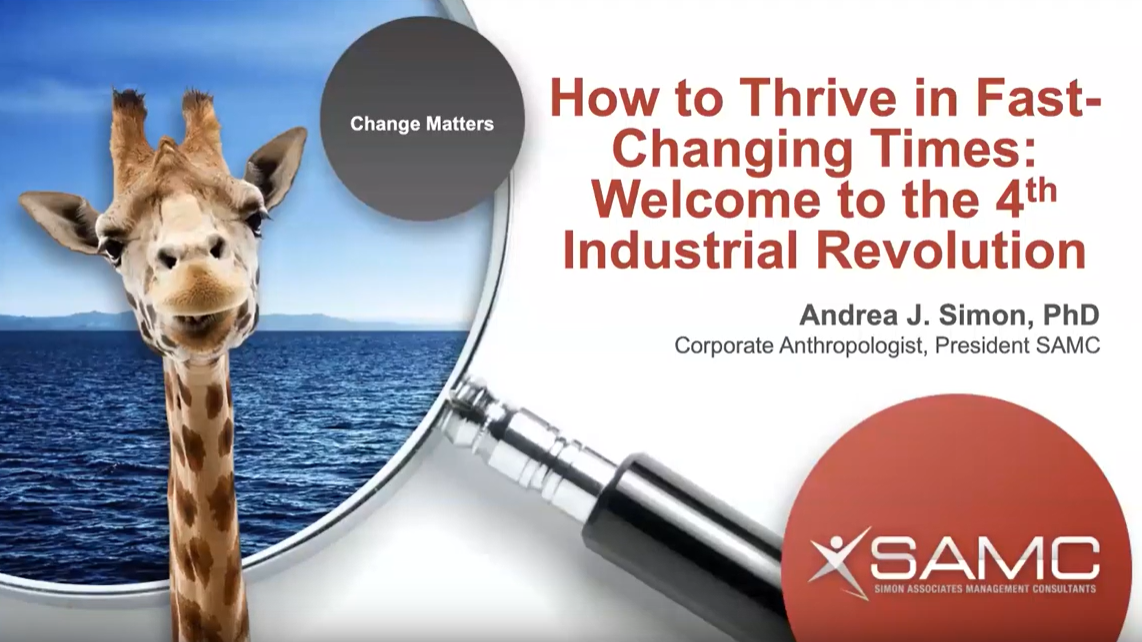When we think about today’s most celebrated business leaders, usually Steve Jobs, Jeff Bezos or Elon Musk come to mind. They are often portrayed as prophets, and with good reason. Once asked about his strategy, Steve Jobs said it was first to change his company, then to change the industry, and finally, to change the world. These highly accomplished visionaries are not only able to “see” the future but also create it.
Possessing highly speculative mindsets, futurists like these chart their companies’ strategies over the long term, with foresight that spans decades, not years. This type of outlook allows them to create products and services that fit into their long-term vision, kickstarting a self-fulfilling prophecy of sorts. As they repeatedly tell the story of this vision, their customers’ brains get accustomed to the leaders’ futuristic ideas, further accelerating and ensuring their vision’s success.
What Separates Our Species From Others? The Ability To Visualize The Future.
Research is finding that our brains actually change when we think about the future, even more than when we reflect upon the past. This viewpoint is echoed by University of Pennsylvania professor of psychology Martin Seligman, who has written extensively about humans as futurists. What’s unique about Homo sapiens (the “wise man”), Seligman states in a 2017 article in The New York Times, is that we think about tomorrow. We contemplate the future. It is this ability to look ahead, he says, that has enabled us to create civilization and build our cultures.
In fact, Seligman suggests that a more apt name for our species is “Homo prospectus” because “we thrive by considering our prospects.” We continuously revise our visualizations of our futures. Maybe most interesting of all is that our brains are actually built to look ahead. According to Seligman, “Looking into the future, consciously and unconsciously, is a central function of our large brain, as psychologists and neuroscientists have discovered — rather belatedly, because for the past century most researchers have assumed that we’re prisoners of the past and the present.”
So, how do you turn your thoughts about the future into improving what’s happening today? Let’s dig a bit deeper.
Futurism Is Not Innovation
Both innovation and futurism are essential to human progress, but should not be mistaken for one another. For instance, business leaders are more than eager to build the future of their industries, often tasking their chief innovation officers with mapping the path to get there and anticipating industry trends along the way.
Unfortunately, innovation strategies tend to focus on applying what is currently available to solve immediate business challenges. While this helps companies navigate the present, it doesn’t really help with the larger goal of mapping a long-term vision of the future.
This dichotomy is aptly described by Amy Webb, a quantitative futurist and professor of strategic foresight at New York University Stern School of Business:
“Chief strategy officers and those responsible for choosing the direction of their organizations are often asked to facilitate ‘visioning’ meetings. This helps teams brainstorm ideas, but it isn’t a substitute for critical thinking about the future. Neither are the one-, three-, or five-year strategic plans that have become a staple within most organizations, though they are useful for addressing short-term operational goals. Deep uncertainty merits deep questions, and the answers aren’t necessarily tied to a fixed date in the future. Where do you want to have impact? What it will take to achieve success? How will the organization evolve to meet challenges on the horizon? These are the kinds of deep, foundational questions that are best addressed with long-term planning.”
Innovation Is A Reactive Approach For Today, While Futurism Is A Proactive Path For Tomorrow
Innovators and futurists are not the same. In fact they’re very different. Innovators incrementally find new ways of tapping into existing resources, technologies and partners, which propel them one or two steps ahead. Disruptive futurists, on the other hand, build toward their expected predictions and forecasts by anticipating what’s to come, using different scenarios to develop their innovation pipeline.
Who Are Today’s Futurists and How Do They Help Organizations Envision that Future?
Authors, corporate strategists, foresight consultants, marketers, investment managers, risk analyzers, prediction market developers…all can be futurists. Sometimes called trend analysts, futurists do more than attempt to predict the future — they explore predictions and possibilities about the future, putting themselves and their organizations miles ahead of the competition.
If you are ready to become a futurist, one of the most important things to do is to build your idea bank. At SAMC, we often tell our clients that the more ideas you have the more likely you will have “big ideas.” They come at the intersections. Your mind just needs to have an abundance of options. Then your brain is more likely to have an “aha” moment and begin to see things through a fresh lens. We’ve written a blog about this, which you can read here.
Tools To Help You Take Your Ideas And Frame Them Into Futurist Visons
You may be asking, what tools do these visionaries use to imagine and prepare for the future, and can you use them too? One key insight comes from Alexandra Levit, partner at PeopleResults and author of “Humanity Works: Merging Technologies and People for the Workforce of the Future.” She says that futurists fill their minds with loads of ideas, then consult experts in their field about what they’re envisioning.
So how do you become a futurist? Here are some tools to get you started.
Scenario planning. According to Forbes, scenario planning entails developing a group of potential realities about what might happen in the future of business, and more specifically, your organization. This type of future planning takes into account uncertainties, major disruptions that are likely to affect your business, the implications for each potential reality, and how strategy should be appropriately adjusted if certain realities come to fruition. Think of this as active imaginings. You are literally trying to change the story in your brain from what it thinks is right today to what might potentially happen tomorrow.
Environmental scanning. But what exactly is that potential future? Well, when you spend time scanning the horizon, says Akshay Sharma of Entrepreneur, you begin to formulate a holistic, all-encompassing view of the world. These wide-ranging scans involve extensive research and reporting on global, societal, economic and demographic trends that are likely to impact your business, your industry and your competitors, as well as how the environment in which your business operates is likely to shift over the next several years. They also incorporate a review of your organization’s opportunities and challenges in the years to come, because now you’re seeing your business as part of a larger ecosystem. You’re not just competing in a known marketspace — you’re pushing into the unknown where everything, including your clients, is changing.
The Delphi method. The Delphi survey method is a forecasting process based on the results of multiple rounds of questionnaires sent to a panel of experts in your industry. These expert opinions help you devise a group of potential future scenarios. In the first round of inquiry, the panel is asked to list developments that will most significantly impact your business in the near future. Based on the ideas that are generated, you might develop a second survey to gain consensus on these ideas on a larger scale, or you might go back to the panel to get a synthesis of opinions. The goal is to reach the most accurate response through consensus.
Need to get your business ready for tomorrow? This webinar shows you how.
What products and services are you going to need to serve your clients of tomorrow? Is your team ready for the future of work — specifically, how Millennials and even younger generations approach work? Does your culture support technology and facilitate innovation? To learn how to not just survive but thrive in these fast-changing times, watch my recent webinar, “Welcome to the 4th Industrial Revolution.” Click here or on the image below.
Get the full transcript of this webinar here.
It’s Never Too Early For Futuristic Thinking
The future is coming at us, fast. In many instances, it’s already here. That’s why today’s organizations need to plan constantly for tomorrow and make adjustments to stay in sync with their updated visions. The faster they start this process, the sooner they can take advantage of what a futurist business strategy can mean for their organization, their employees, their customers and their entire industry as a whole.
Is Your Business Ready for the Future?
Do you know how to sustain growth in changing times and prepare for the future? At Simon Associates Management Consultants, we specialize in helping organizations change, grow and thrive in today’s fast-changing times. Please contact us to discuss how our team of specialized corporate anthropologists and culture change experts can work with you so that you and your business can overcome today’s, and tomorrow’s, challenges and soar. We look forward to hearing from you.
Want To Know More? We Recommend These 2 Blogs and A Podcast
- Blink And The Future Is Here. Are You Ready?
- What Time Is It? Time To Change
- Byron Reese—A Futurist Reveals How Technology Is Transforming Our Entire Society
From Observation to Innovation,

Andi Simon, Ph.D.
Corporate Anthropologist | President
Simon Associates Management Consultants
Info@simonassociates.net
@simonandi
Don’t miss an episode of our On The Brink podcast!
Subscribe now




